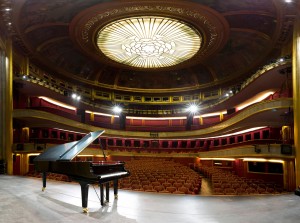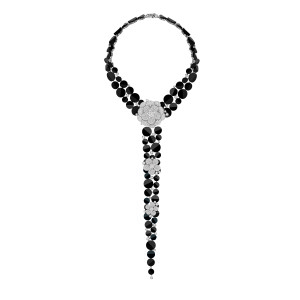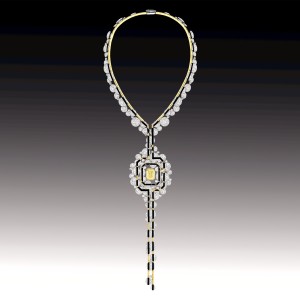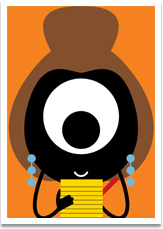An angular style to express the spirit of the Roaring Twenties.
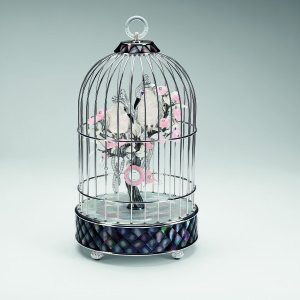
Café Society? I stood in the empty Paris theatre gazing at the audacious jewels strung in architectural shapes, wondering where Coco Chanel came into this story.
From researching “The Windsor Style”, about the lifestyle of the Duke and Duchess of Windsor, I knew that “Café Society” was a term used in the Twenties as a social sneer. It suggested a louche group of people without a bloodline to genuine aristocracy.
The graphic jewels in front of me had a hard edge – even Chanel’s signature camellia was set in blocks of pavé work on pink sapphires and diamonds. An onyx necklace with a smart black tail, interspersed with diamond camellias, was given the name Tuxedo – and it did remind me of the streamlined masculine look of the Roaring Twenties.
As I stood on the theatre’s stage, looking into the auditorium, where the ceiling was serendipitously shaped like a camellia, I began to get the story: Coco Chanel as a symbol of modernity. That was echoed in the modernist structures that seemed to be based on straight lines.
The “programme” notes summed up the story: the inspiration was Gabrielle Chanel’s apartment on the Rue Cambon, where a tiny, decorative cage holding a clock and two mother-of-pearl lovebirds had inspired the collection.
The angular shapes, the insert of onyx to draw geometric lines across white diamonds, and the three-dimensional settings gave a sense of modernity. And it made even the camellia flower seem smart, sharp and as modern as Coco Chanel’s life in the Twenties.
A selection of Chanel’s Café Society collection will be on display at the Biennale des Antiquaires in Paris from September 11.

